The idea of a large caliber AR wasn’t a concept until the last decade. Certainly, when one envisioned a “large caliber” on the AR, it wasn’t even traditionally what you would think of as an actual large caliber.
Cartridges like the .45ACP and the .308 Winchester were about as large as it got. It wasn’t until the “stubby” rounds that the large caliber ARs truly came into their own.
Now you can drop a huge lead-delivery device on top of a standard AR lower in the form of a large caliber upper receiver conversion, and get some different tasks done with America’s favorite rifle.
This article is set to explore the options that come along with this new-found large-diameter obsession that stems from bridging the versatility and usefulness of the modular, component driven AR eco-system into even greater boundaries.
The Versatility of The AR Platform
It was already America’s favorite gun before the “innovative guys” in the tactical space started trying to innovate based on how much grain weight per shot could be moved by the AR platform.
Now when the “innovative guys” moniker is used there is some clarification needed: for instance, Bushmaster (purveyors of the .450 Bushmaster) was an early proponent of the AR.
One of the earliest mainstream innovators, even if they did have a few bruises thanks to poor product releases and the newness of the concepts they were championing, over the past few decades.
Additionally, The Grendel guy, Bill Alexander was mostly a bit-part player in an industry ruled by iconic heavyweights like Colt and military production outfits like DPMS. That is, until he started getting innovative on a backdrop of a mostly stagnant AR field.
The 6.5 Grendel and the .50 Beowulf (covered below in some detail), suddenly were very interesting concepts that Bill Alexander had a huge part in bringing to market.
Who knew what “Tromix” was before the .458 SOCOM? Few who weren’t industry insiders and procurement-types were familiar with the company until it leapt into greatness following the introduction of the hard hitting SOCOM.
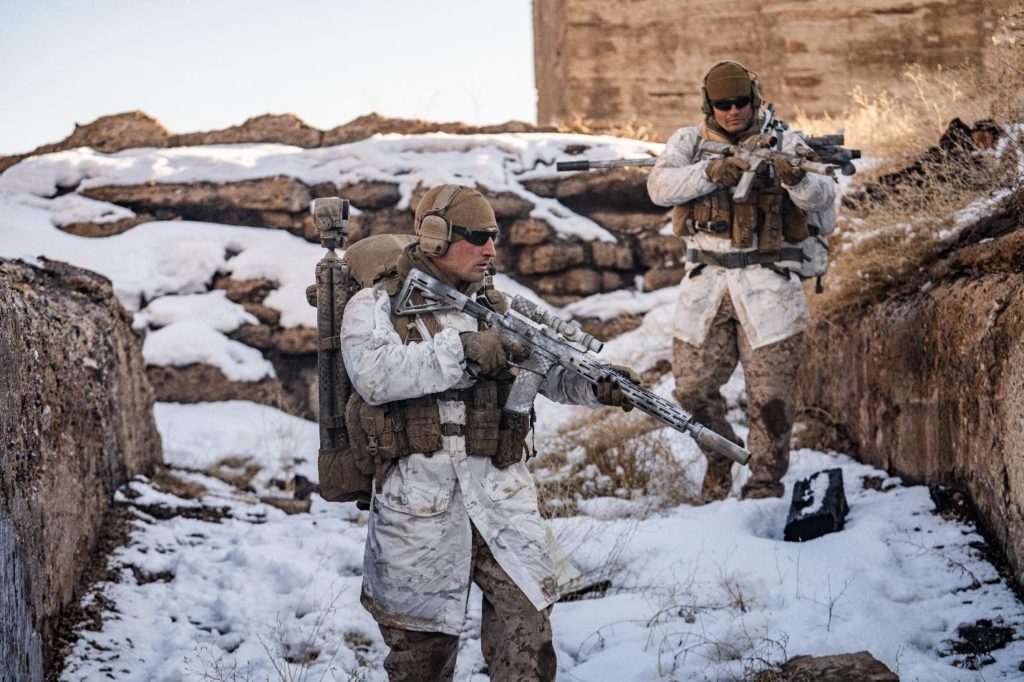
What about when Bill Wilson started pushing the HAM’r Rounds? These have become a trademark calling card of the once-1911-specific builder. Now, everyone sees Wilson combat as a true R&D company and defense producer instead of a custom 1911 and shotgun outfitter.
These are only a small sampling of the “innovative guys”, but they paint a good picture of what the landscape looked like in the infancy of the larger caliber AR rounds.
Now, a bit more mature, the “stubbies” have come into their own as realistic options for those who want to drop the maximum amount of lead per shot on target out of something easily carried and infinitely shoulderable.
What’s New in The World of Large Caliber ARs
If you haven’t been following for a couple of years, you’re in for some surprises. Otherwise, the usual suspects from that past couple of years are now a stable of obvious choices in the AR game.
Shorter Range Behemoths
The range isn’t a factor really. You carry a .45-70 GOVT., or you carry an AR in the field if you want this type of performance – the choice is yours. For under 150 yards, these massive workhorse cartridges provide hard hitting, brush destroying hunting options; law enforcement barrier breaking potential, or just a heavy-handed range option for the enthusiast. “Heavy-handed” is meant in the most endearing way possible.
The .458 SOCOM
The game changer for the .458 SOCOM is the 600-grain bullet it can project at 1000 fps and with 1330 ft. lbs. of energy which is unbelievably powerful in close quarters combat and against dangerous game in the field, where you may only get one chance to stop a charging bear or buffalo, etc.
That said, the other grain weights in production for the .458 SOCOM are powerful too and align well with the other big bore competitors on this list.
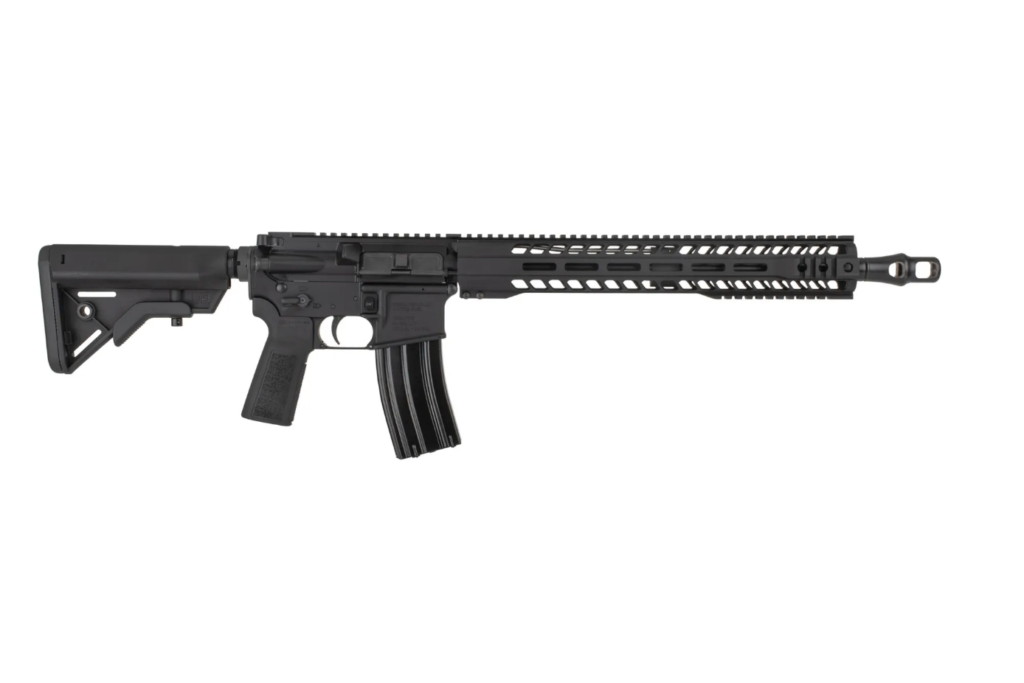
A very good round for tailoring a defensive weapon, like a trunk gun or a law enforcement duty weapon which can be an equalizer in an active shooter situation where the shooter has had time to embed behind cover.
It’s no slouch for hunting either, and you can make the case in the larger game arena, with some definite options on intermediate game under heavy tree cover or in dense brush land. An area like this, where a load option like the 325-grain bullet can push around 1850 fps and 2500 ft. lbs. of energy at the bore exit can tame the landscape with such numbers.
The .50 Beowulf
Probably seen as the stereotypical “big bore” or “large caliber” cartridge on the AR ecosystem, the .50 Beowulf is as destructive as it seems. It can break barriers, shooting into protected positions, and rendering cover pointless, for the bad guys in a law enforcement situation.
But it also shines as a large game, close-range option that delivers big payloads on targets up to 150 yards or maybe even to 200 yards on game targets as big as 1k-1.5k lbs. with the right conditions.
Comparative to the standard loads for the .45-70 GOVT. You can get more capacity in the AR for non-hunting applications (7-10 rounds for the .50 Beowulf, typically), with similar performance, but in a much smaller package and with many more defensive-minded load options.
A standard .45-70 GOVT load for comparative purposes offers approximately 2080 fps velocity and 2860 ft. lbs. energy at the muzzle with a 300 grain JHP projectile.
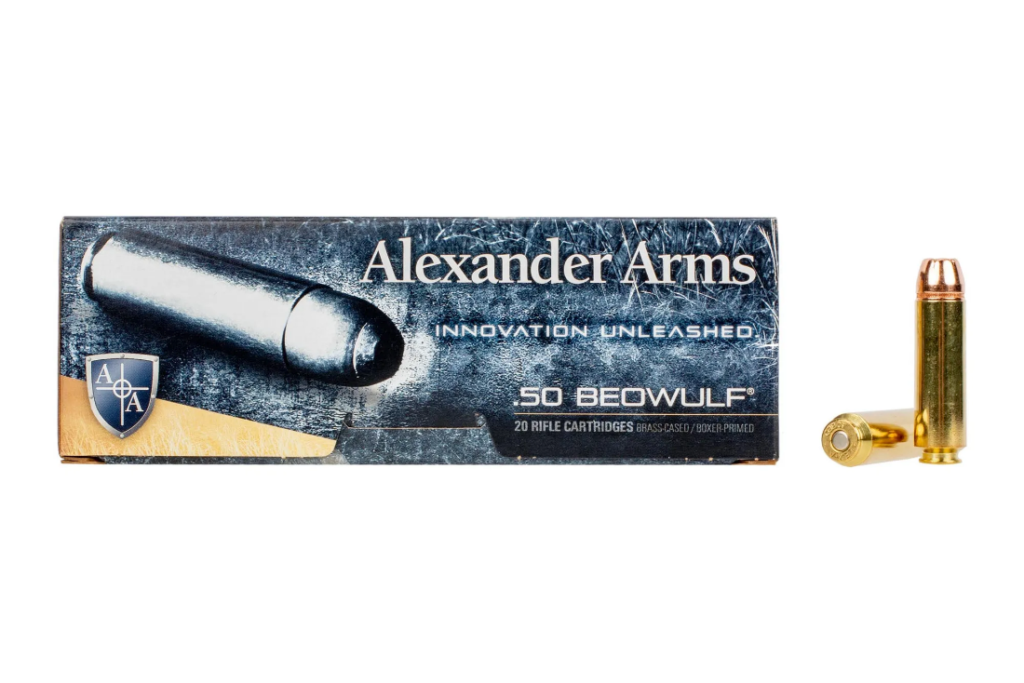
The Beowulf can produce the following:
- 300 grain JHP – approximately 1850 fps velocity and 2320 ft. lbs. energy at the muzzle
- 400 grain – approximately 1800 fps velocity and 2860 ft. lbs. energy at the muzzle
In full transparency; because of the extra-long case length, the .45-70 GOVT can be uploaded heavily to improve ballistics, but it requires handloading and a lot of extra weight and necessitates lower capacities available to the shooter.
Under the right conditions, the Beowulf can be a do-it-all gun for those that live in rural areas that need self-defense in a big way and want to hunt big game with the same gun. Think of it as the Alaskan version of the AR-15.
You can reasonably expect to stop a bear in its tracks with the cartridge out of the very capable AR platform.
.350 Legend
More like the traditional intermediate sized lever gun replacement, the .350 legend adds .30-30-like performance to the AR and while it is not a truly “big bore” option, it has more than enough power and velocity to produce excellent ballistics.
It also broadens the range of the larger options on the AR platform, such that you can move into the smaller game on the “big game” spectrum, like deer and still get through the tough skin of goats, rams, and hogs at decent ranges.
You’re still looking at a sweet spot of no more than 300 yards. But the delivery of lead is substantial and the retained energy on target in a potentially brush-dense scenario is excellent.
.450 Bushmaster
Faster moving than the competitive options and more suitable as an intermediate range, intermediate sized game cartridge, the .450 Bushmaster gives up some grain weight in exchange for penetration and speed and while it may not be the 1000 lb. game option that the bigger rounds are, it’s certainly capable of dispatching a wider range cleanly down into the 125lbs deer range, and above 850 lbs.
In short distances with particularly good brush potential. Also, many would argue if you can take 850 lb. targets you can take a 1k lb. target.
Comparatively, the above listed cartridges look something like this when laid next to each other (these are approximations):
.450 Bushmaster
Grain weights (250, 260)
Grain weight (260) example: 2170 fps velocity and 2730 ft. lbs. energy at the muzzle
.350 Legend (for comparative purposes – not intended to be a competitor)
Grain weights (160, 165, 180)
Grain weight (180) example: 2100 fps velocity and 1760 ft. lbs. energy at the muzzle
.458 SOCOM
Grain weights (250, 300, 325, 405, 600)
Grain weight (405) example: 1600 fps velocity and 2320 ft. lbs. energy at the muzzle
.50 Beowulf
Grain weights (300, 325, 335, 400)
Grain weight (400) example: 1800 fps velocity and 2860 ft. lbs. energy at the muzzle
What Is the Best Application for These Block-Busters?
Obviously home defense and law enforcement uses are a reality. The ability to put hundreds of grains of lead on target in a rifle round with rifle accuracy, instead of using a slug gun, or having to have clear sight of a target means these huge rounds just make sense. You can realistically penetrate barriers with these hard-hitting cartridges.
They see use for that type of activity in law enforcement and “likely” in military operations where they make sense – though they aren’t necessarily up for any open contracts in the military defense budget realm. It’s hard to imagine a hard-hitting, door-breaching special operations crew that hasn’t at least explored the idea.
Intermediate and Longer-Range Shooters
You can also classify some of the other innovative and interesting cartridges to hit the market as “larger caliber” options on the AR platform. Though some of them wouldn’t technically meet the traditional standards of the “large caliber” concept.
You can also add into the mix the one-off specialty cartridge builds that the lower receiver of the AR is capable of accommodating. But that should be tempered with a bit of reality. There are very few proven platforms that deliver true large caliber high-powered centerfire cartridges natively on the AR.
You can see the occasional specialty build from boutique makers, that may include the .338 Federal or the .300 Win Mag. Both cartridges may not truly be considered big bore options.
Make no mistake though, these are hard hitting ridiculously powerful options that DO fit onto the AR lower. Whether or not you want to discount them in this overall discussion is up to you.
Do You Really Have to Use a Larger Caliber?
Bigger than 5.56 is sometimes all it takes to get traction in the AR space. And that is why some of these concepts are entertained at all. That said, had they never been entertained we probably wouldn’t have some great contenders like the .350 Legend: the .300 HAM’r, the 6.8 SPC, or even the 6.5’s and the .300 BLK (all admittedly not true big bore cartridges – but all excellent in their own ways).
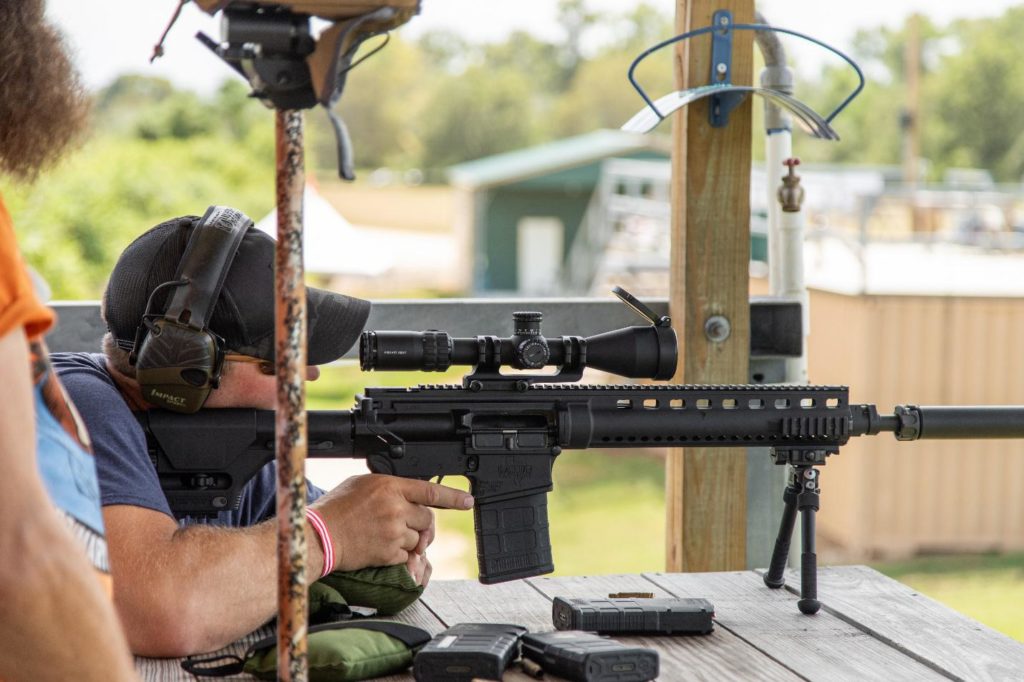
Obviously, these aren’t larger caliber options, they just happen to be larger caliber than the .223/5.56. And for some, that’s enough to make a new category. In this case, a very compelling category.
6.8SPC – Special Purpose, But Not Exactly Tiny Either
The 6.8 is hardly a big bore cartridge, but it’s big enough to be interesting to shooters of all types including hunters, law enforcement, military, and even home defense groups.
.338 Federal
While it’s too obscure of a concept to be in the discussion yet, the idea of a .338 Federal being a viable option in the field on top of an AR, is too interesting to dismiss. But alas, it hasn’t been proven well enough to be a “thing” yet.
.300 Win Mag
The concept of a .300 Win Mag AR is an incredible idea, being pursued by a very small handful of makers (and only commercially viable currently, for the single company making one).
It’s a serious and legitimate option. But it’s not proven yet. Time will tell if the market adopts the long-action AR concept as it sits on the market in its current iteration.
Obscure But Interesting Options Like The .300 Remington SA Ultra Mag
It’s hard to take these concepts seriously in a discussion like this, not because they aren’t cool conceptually, or even potent options, but because they aren’t mainstream enough to even be considered by a wide range of users.
It’s a novelty still at this point – but you heard it here first – the next reach-project for the AR community is likely to be high powered, larger caliber, fast moving cartridges being married to the convenience and market-defying builds of ARs everywhere.
The bottom line? It’s too soon to include these cartridges in the discussion.
Where Are You Legitimately Using These Cartridges in an AR?
The best use case for the mainstream shooter is at the range or while on the range in search of close proximity, large game. The rounds are suitable in theory for Bear, Moose, Elk, etc. though, you’d need to consult your state and local regulations to be sure they are suitable by the letter of the law.
In deep brush, these are perfect for deer and other intermediate game thanks to the tank-like energy delivery and the relatively slower speeds, allowing them to punch through standing brush and dense dead vegetation or thickets of bunched trees with the ultimate target of the game animal in the mix.
Admittedly, these are overkill for many species of deer, but you can dial back the loads to increase your game spectrum.
You can easily expect these rounds to take 1000+ lbs. game targets, including dangerous game targets in North America. So hunting is a real option.
Shooting through everything makes these cartridges a difficult choice for some in a home defense situation though, because they have multiple hit potential and that doesn’t play well in apartment living or other urban-centric domiciles.
On a ranch these things can be incredible options for an all-around firearm from coyote to hogs, to other predators and disruptive targets. This is also a good option for rural home defense in many cases.
Conclusion
Ultimately, the ever-broadening spectrum of use cases for the AR-15 and even the AR308 pattern are increasing. It was time for the large caliber options to be in the spotlight, and now the consumer can do more things with the already plenty-proven AR.
Thanks to Benjamin for another awesome article!





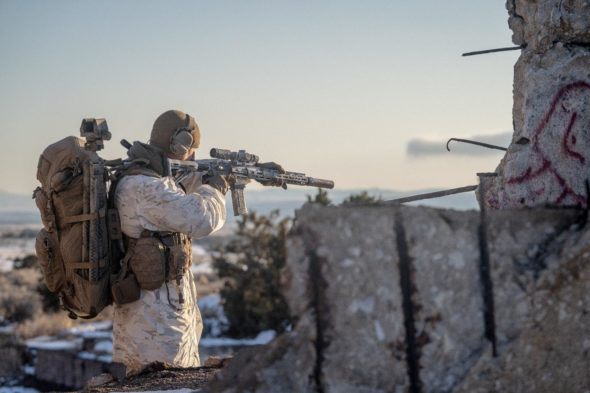



I built two large caliber uppers for my ARs I completed from 80% forged lowers.
A 458 SOCOM and after that a 350 Legend.
I also built a AR10 for 7.62X51/308Win, barrel specifically to shoot both.
The others are 5.56 and 300BLK.
I loaded 300gr. HP for the 458 and get 2110 FPS.
I recently finished another AR lower and may top it with a 50 Beowulf upper I’ll build.
Money is tight and components are hard(er) to find if at all. I have an AR10 for anything worth a marinade. I have an AR15 for varmints of the 4 legged variety and the uninvited two legged variety. I would love to entertain a 6.8 SPC or a 6mm ARC later one when things are back to normal.
I never understood why the .30 Remington AR wasn’t more successful because it is slightly more powerful than the .30-30 and it can use more ballistically-efficient projectiles than most leverguns because it doesn’t use a tubular magazine. And the 300 Blk, the popularity of which bewilders me, is a pipsqueak in comparison. But it you want one now, you best handload.
And if you also want a thumper in the deal, the .30 RAR shares a boltface with the .450 Bushy, so you’re only a barrel swap away from a big-bore with factory loads that go up to 300-gr and handloaders can load up to 350 grainers and still have a lot of steam on it.
338 Federal is under appreciated. It has more muzzle energy than 7mm Rem Mag and retains 308 trajectories out to 500 yards. Q created the 8.6 BLK which is a 338 with a smaller case capacity, trying to cater to hunters using SBRs with cans. It misses the mark with the energies produced. A 338 barrel from Wilson Combat is on my short list.
Tim Legendre builit the first 45 Professional around 1979. Mario Palambo of American Firearms, built the 50AE’s in 1994, and Tromix made the 440 CorBon, 44 Rem Mag, 44 Auto Mag, and 50AE in 1999. It didn’t just happen in the last decade.